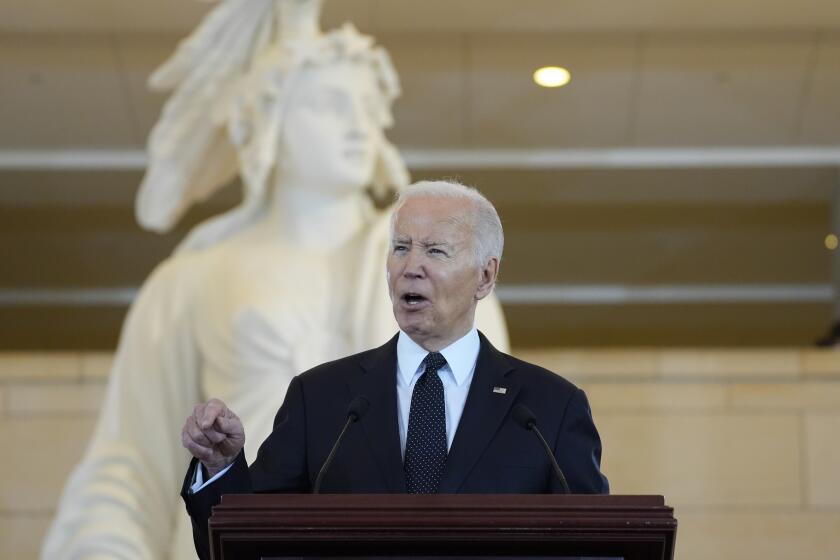Board to Search for Flaws at NASA
Beyond searching for the flaws that brought down the space shuttle Columbia this month, the independent board investigating the disaster pledged Tuesday to produce nothing short of a blueprint for the future of American space exploration.
In the coming months, as the Columbia Accident Investigation Board tries to find the cause of the Feb. 1 explosion, its members will focus on minute details.
For instance, investigators hope to find tiny droplets of melted aluminum on some of the debris discovered in Texas and Louisiana. That would help firm up the board’s theory that superheated gas known as plasma penetrated the space shuttle’s aluminum skin seconds before the craft broke apart, killing its seven-member crew.
But the investigation will not end there, board members said. The panel plans to investigate every aspect of NASA, from its management and culture to the very future of manned space flight.
“The board has not yet established the outer limits of our investigation,” said retired Adm. Harold W. Gehman Jr., the chairman of the board. “It will be the foundation of a good, intellectual debate about what we might do next.”
In particular, Gehman said, the panel will look at whether budget constraints placed on NASA over the last decade contributed to the accident. If so, billions of dollars could be at stake once the board issues its final report.
NASA’s budget has remained at or near $15 billion in recent years, even as the agency’s mission has increased dramatically, particularly with the new responsibilities associated with the development of the international space station. Meantime, the agency has reduced its workforce by nearly a quarter, from 25,000 to 19,500, since 1993.
Critics say safety has been compromised, and officials said Tuesday that the board will investigate, among other things, whether too many safety officials have been sacrificed to save money and whether “aging spacecraft” pose a threat.
“That’s going to be key,” said Maj. Gen. John L. Barry, a member of the investigative panel.
The panel might go so far as to recommend changes to NASA’s budget, but Gehman said he anticipated “looking at the effect on the program rather than condemning any particular number.” In the end, Gehman said the decision to bear the cost of any upgrades to the space program will rest with President Bush and Congress.
“We aren’t going to make [those decisions] for them,” Gehman said.
Also Tuesday:
* Investigators said they have concluded that objects began falling from the space shuttle while it was over California, according to new radar data. Investigators, however, have not confirmed finding any pieces of debris west of Fort Worth. They are using computer programs in an attempt to determine the trajectory of the first objects to fall and estimate where they might have landed.
* Officials said 3,656 pieces of debris have been taken to Kennedy Space Center in Florida, where they are being laid out like a puzzle on the floor of a warehouse. The pieces include a second portion of the left wing that is missing heat-resistant tile, officials said. A first portion of the wing was discovered last week. An additional 10,000 pieces of wreckage are on the way.
Still, said board member James Hallock, the U.S. Department of Transportation aviation safety division chief at Cambridge, Mass., just 5% of the shuttle wreckage has been recovered.
* Hallock, who is assigned to investigate space shuttle engineering, said investigators do not suspect that an electrical storm caused the accident. Those suspicions were initially raised when photographs taken in the Bay Area purportedly showed the shuttle falling victim to lightning or another electric, atmospheric event. Hallock did not elaborate on why the board does not consider that a leading theory.
* Investigators said they have learned more about an object that neared the space shuttle on the second day of its mission.
The object was first detected by Department of Defense radar technicians and lent credence to the theory that the space shuttle was damaged by a meteorite or a piece of space junk.
New analysis shows the object was the size of a basketball and was not made of metal. Officials are still trying to determine what it was and whether it struck the shuttle.
More to Read
Start your day right
Sign up for Essential California for news, features and recommendations from the L.A. Times and beyond in your inbox six days a week.
You may occasionally receive promotional content from the Los Angeles Times.







